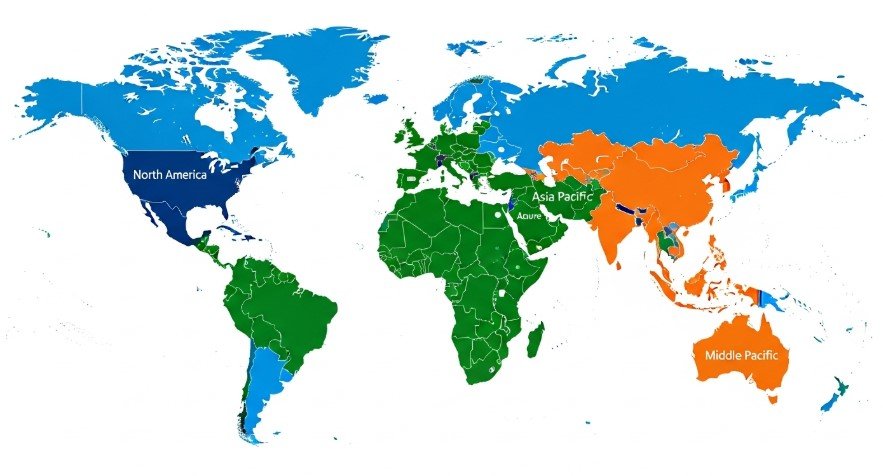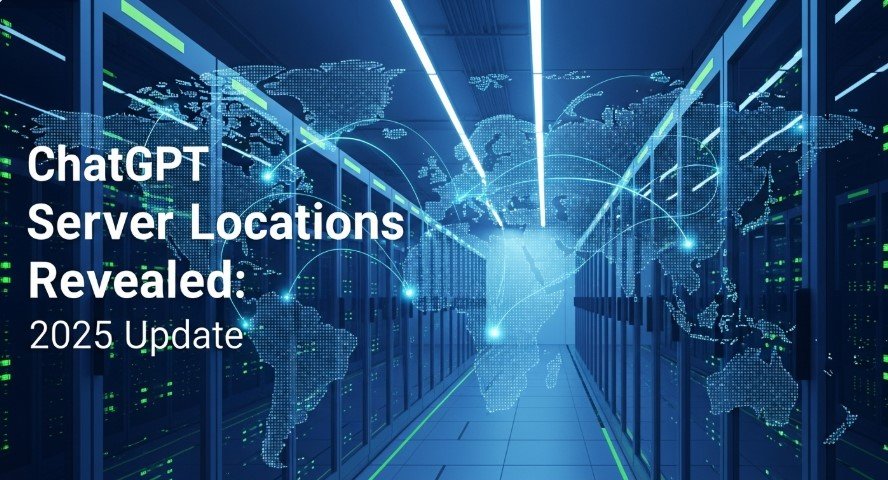ChatGPT, developed by OpenAI, powers millions of daily queries, but where are its servers? Understanding their locations reveals how ChatGPT delivers fast responses, ensures data privacy, and affects the environment. This article uncovers the server locations, their global reach, and OpenAI’s future plans, based on the latest data as of July 2025.
Why Server Locations Matter
Server locations impact ChatGPT’s performance, data privacy, and sustainability. Here’s why:
- Speed: Closer servers mean faster responses.
- Privacy: Locations determine which data laws apply, like GDPR in Europe.
- Environment: Data centers use energy and water, raising sustainability concerns.
This guide explains where ChatGPT’s servers are, how they work, and what’s next.
Primary Server Locations
ChatGPT runs on Microsoft Azure, a top cloud platform. Its servers are mainly in the United States, with key locations including:
- Iowa: West Des Moines is a confirmed site for GPT-4 training, which powers ChatGPT. Its cool climate cuts water use for cooling .
- Virginia: Hosts East US and East US 2 Azure regions.
- Texas: South Central US, a major hub for ChatGPT .
- California: West US region.
- Washington: West US 2 region.
- Illinois: North Central US region.
- Wyoming: West Central US region.
OpenAI keeps exact addresses private for security. These locations ensure low latency and reliability for US users.

Global Reach and Data Centers
ChatGPT’s core servers are in the US, but Azure’s global network spans over 60 regions in 36 countries, ensuring worldwide access. Key regions include:
- North America: US, Canada, Mexico.
- Europe: UK, Germany, France, Netherlands.
- Asia Pacific: Singapore, Japan, Australia, India.
- Middle East: UAE, Qatar.
- Africa: South Africa.
Enterprise and education users can choose data residency in regions like Europe, Japan, or India to comply with local laws . General users’ data stays in the US.

Data Privacy and Residency
Data residency means storing data in specific regions to meet local laws, like GDPR or CCPA. OpenAI offers residency options for enterprise users, such as:
- Europe: For GDPR compliance.
- India: To meet local data regulations.
- Japan, Canada, South Korea: For regional compliance.
General users’ data is stored in the US, under US privacy laws . This affects:
- Latency: US users get faster responses.
- Compliance: Businesses can align with local regulations.
- Reliability: Multiple data centers prevent downtime.
For developers, choosing a nearby server via the OpenAI API improves performance .
Environmental Impact
Data centers use significant energy and water, especially for cooling. A 2023 study found that 5-50 ChatGPT prompts use about 0.5 liters of water, depending on location .
Key points:
- Iowa: Cool climate reduces water use.
- Texas: Warmer climate increases water needs.
- Microsoft’s Efforts: Uses renewable energy and efficient cooling in newer centers .
| Location | Region | Environmental Notes |
|---|---|---|
| Iowa | Central US | Cooler climate, less water for cooling |
| Texas | South Central US | Warmer climate, higher water use |
| California | West US | Moderate climate, balanced needs |
Future Expansion
OpenAI plans a new data center in India by 2025 to:
- Serve India’s growing user base, which has tripled recently .
- Meet local data laws.
- Support nearby countries.
This reflects OpenAI’s focus on global growth and accessibility.
Conclusion
ChatGPT’s servers are primarily in the US, hosted by Microsoft Azure in states like Iowa, Virginia, and Texas. Azure’s global network ensures worldwide access, with data residency options for enterprises. A planned India data center by 2025 shows OpenAI’s commitment to expansion. These locations impact speed, privacy, and sustainability, making them key to ChatGPT’s success.
For more on ChatGPT’s technology, check these posts:
